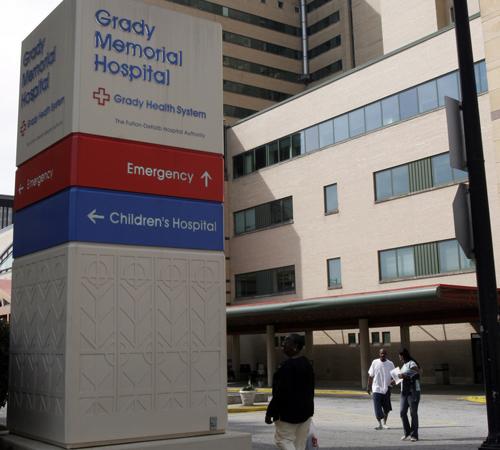Federal quarantine issued after tuberculosis case discovered

May 30, 2007
Last updated on May 12, 2016 at 12:11 p.m.
ATLANTA – A man with a rare and dangerous form of tuberculosis ignored doctors’ advice and took two trans-Atlantic flights, leading to the first U.S. government-ordered quarantine since 1963, health officials said Tuesday.
The man, whom officials did not identify, is at Atlanta’s Grady Memorial Hospital in respiratory isolation.
He was potentially infectious at the time of the flights, so officials at the Centers for Disease Control and Prevention recommended medical exams for cabin crew members on those flights, as well as passengers sitting in the same rows or within two rows.
CDC officials did not release row numbers but said the airlines were working with health officials to contact those passengers. Passengers who should be tested will be contacted by health officials from their home countries.
Get The Daily Illini in your inbox!
The man told health officials he was not coughing during the flights. Other passengers are not considered at high risk of infection because tests indicated the amount of TB bacteria in him was low, said Dr. Martin Cetron, director of the CDC’s division of global migration and quarantine.
In an interview with the Atlanta Journal-Constitution, the man said he had traveled to Europe for his wedding and honeymoon and expressed frustration with how he said the CDC handled the situation.
“I didn’t want to put anybody at risk,” the man, who declined to be identified because of the stigma surrounding his condition, told The Atlanta Journal-Constitution. “We just wanted to come home and get treatment.”
The infected man flew from Atlanta to Paris on May 12 aboard Air France Flight 385. He returned to North America on May 24 aboard Czech Air Flight 0104 from Prague to Montreal. The man then drove into the United States at the Champlain, N.Y., border crossing.
The man had been advised by health officials in early May not to travel to Europe. “He was told traveling is against medical advice,” said Dr. Steven Katkowsky, director of the Fulton County Department of Health & Wellness.
The man conceded that the health department advised him not to travel, but he didn’t want to call off his wedding, he told the Journal-Constitution. The CDC never told him he couldn’t go, he said.
When the man arrived back in the United States, he voluntarily went to a New York hospital, then was flown by the CDC to Atlanta. He is not facing prosecution, health officials said.
The man said the CDC contacted him in Rome during his honeymoon, telling him that he had to return home and that he had to turn himself in to Italian authorities, be isolated and be treated there, the Journal-Constitution reported.
“He was told in no uncertain terms not to take a flight back,” Cetron said.
In an attempt to evade the no-fly list that the CDC had put him on, he and his wife flew into Canada and drove to the U.S., he told the newspaper.
“I’m a very well-educated, successful, intelligent person,” he told the paper. “This is insane to me that I have an armed guard outside my door when I’ve cooperated with everything other than the whole solitary-confinement-in-Italy thing.”
CDC officials told The Associated Press they could not immediately comment on the interview.
His wife tested negative for TB before the trip and is not considered a public health risk, health officials said. Health officials said they don’t know how the Georgia man was infected.
CDC officials said they are concentrating on investigating the trans-Atlantic flights, when possibility of spread of the disease was greatest because he was in a confined space with other people for many hours.
The quarantine order was the first since 1963, when the government quarantined a patient with smallpox, according to the CDC.
Tuberculosis is a disease caused by germs that are spread from person to person through the air. It usually affects the lungs and can lead to symptoms such as chest pain and coughing up blood. It kills nearly 2 million people each year worldwide.
Because of antibiotics and other measures, the TB rate in the United States has been falling for years. Last year, it hit an all-time low of 13,767 cases, or about 4.6 cases per 100,000 Americans.
Health officials worry about “multidrug-resistant” TB, which can withstand the mainline antibiotics isoniazid and rifampin. The man was infected with something even worse – “extensively drug-resistant” TB, also called XDR-TB, which resists many drugs used to treat the infection.
There have been 17 U.S. XDR-TB cases since 2000, according to CDC statistics.
The CDC’s statement that the patient is at the low end of communicability “provides some reassurance,” said Dr. William Schaffner, chairman of the department of preventive medicine at Vanderbilt University.
The highly dangerous form is “expanding around the world,” particularly in South Africa, eastern Europe and the former states of the Soviet Union, he said.





